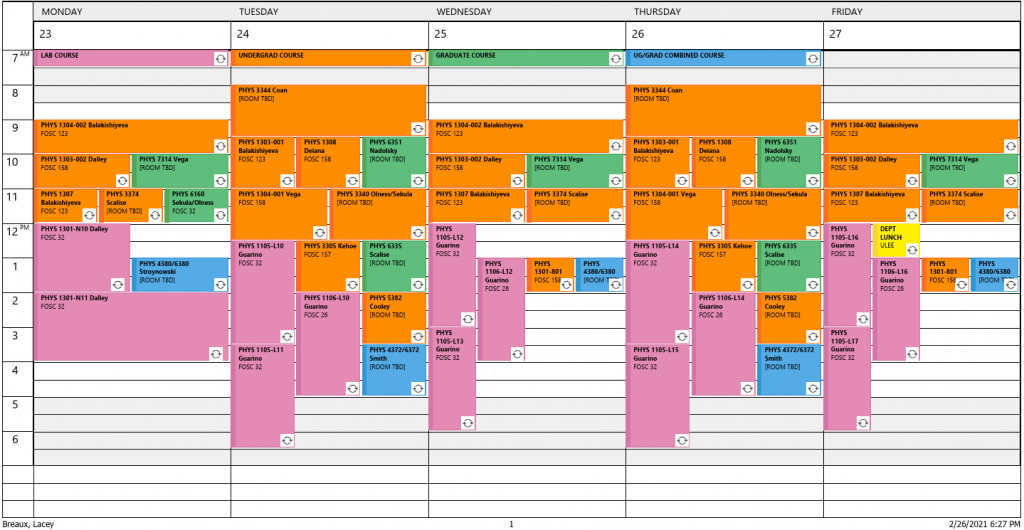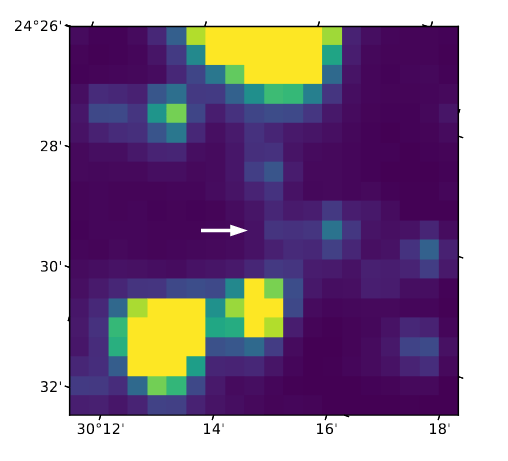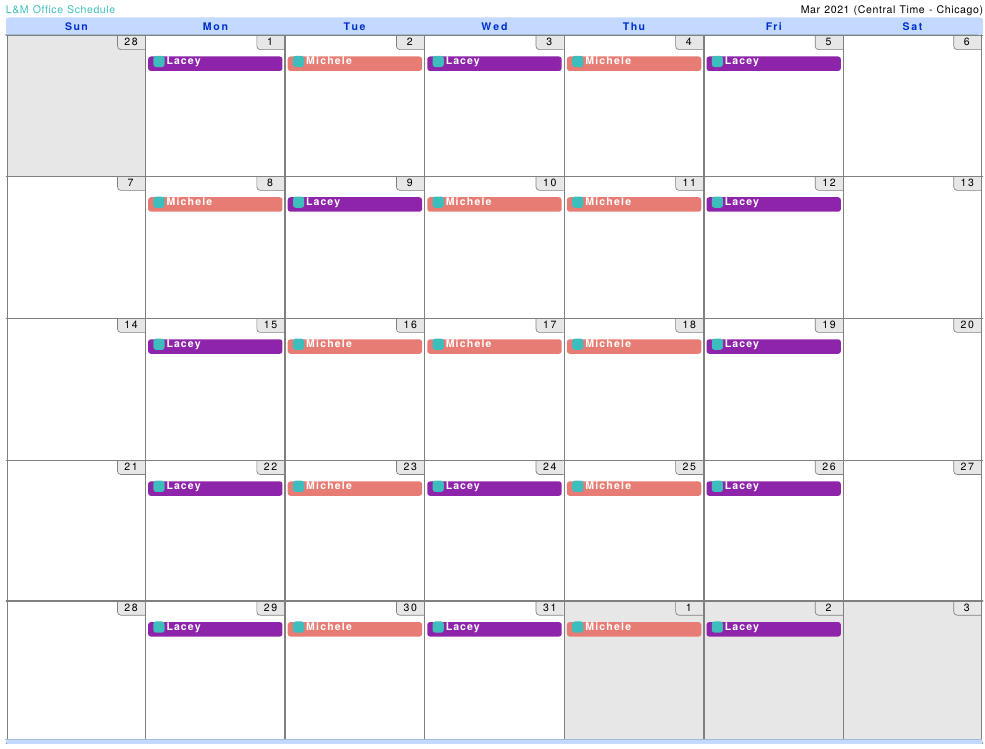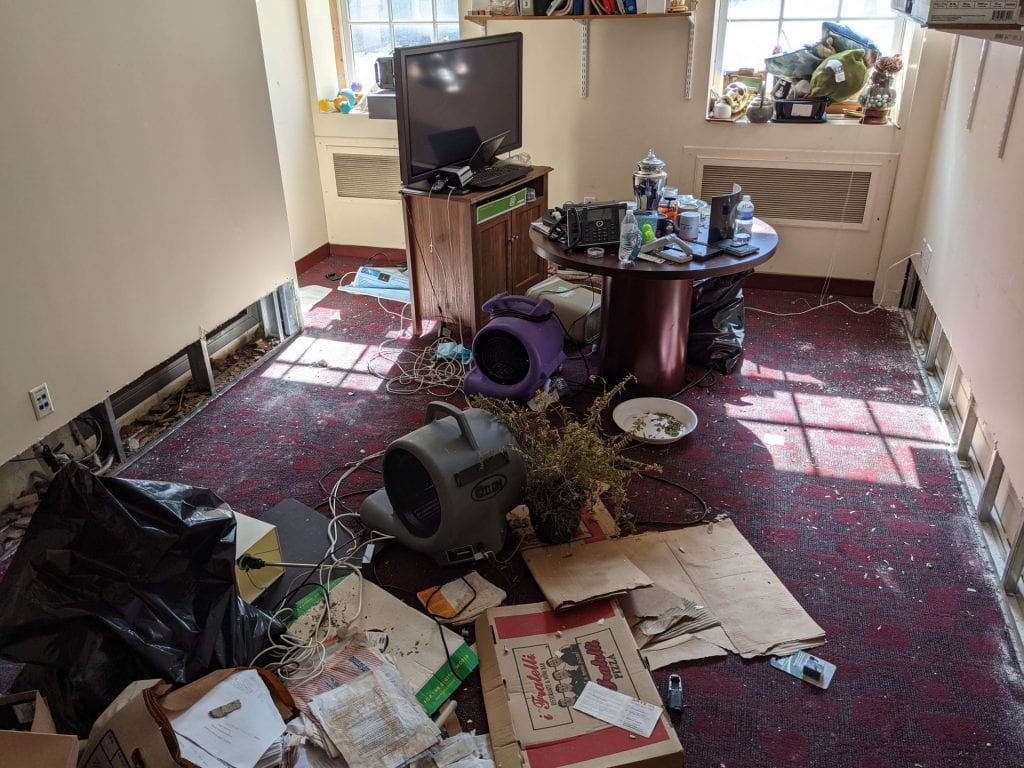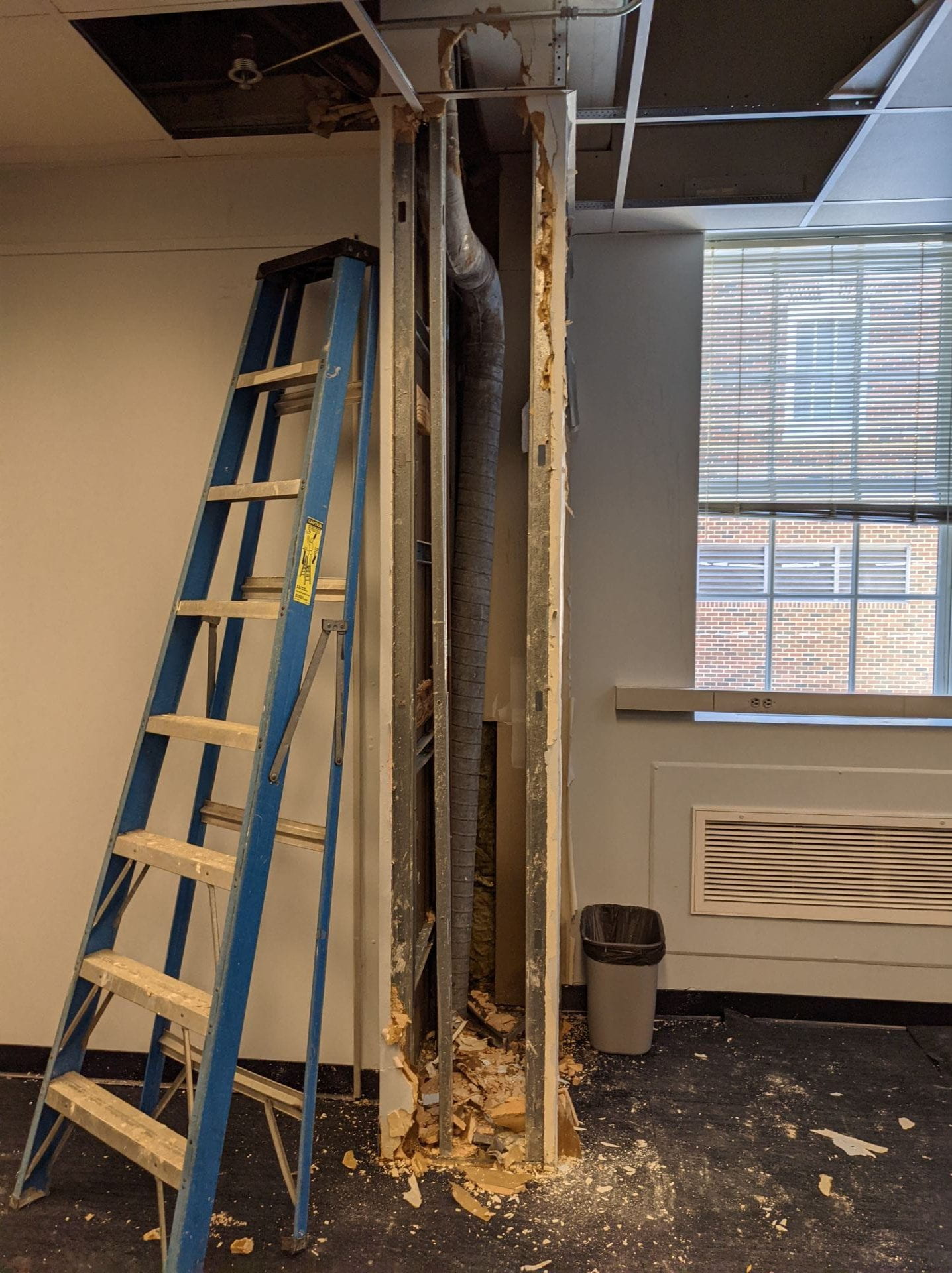
We celebrate Post-Doctoral Researcher Alessandra Betti and Physics Major Jared Burleson; check in on the flood remediation of Fondren Science Building; sneak-peek the fall 2021 courses; and literally look at Gamma Ray Bursts!
Contents
CHAIR’S WEEKLY MESSAGE
“Remediation, Part I”
It was just over a week ago that one pipe, then a second, burst in Fondren Science Building and flooded offices, research labs, teaching labs, and classrooms. Crews worked quickly to shut off the water and evacuate furniture, books, computers, and research equipment from spaces. They did this to begin as quickly as possible the removal of water and damaged sheetrock. The swiftness of this action left things in a blur for supervisors and occupants of spaces.
The heaps of furniture in the hallway were a bit shocking. Computers, books, or personal items sitting out in the open generated worry. Wet boxes of archived papers littered office floors and hallways. Labs soaked with water were accompanied by deeply anxious and upset supervisors. Drywall cut away made the building look like an open wound. The sound of blowers drying the walls and floors was a cacophony. The musty smell in the air was pungent.
It was a lot to take in. Teams of people from risk management, facilities, and information technology roamed the halls in packs, surveying the damage and making plans for dealing with special spaces. One Chemistry Department faculty member was showing remediation workers how to be safe around potentially dangerous and expensive equipment that could not be trivially de-energized.
That was Saturday.
What a difference several days has made. I have tried my best to communicate in letters to the faculty or, as appropriate, the whole SMU Physics community, the remediation schedule and plans as they unfold. Many of us have felt the personal raw exposure of seeing our stuff just sitting out in a hallway. I found myself worried about my books; I still have no idea of the water damage they might have suffered. There was simply too much stuff piled up on top of them to survey that potential loss.
But bright signs are emerging. Sheetrock is replaced. Fresh paint is appearing on walls. New carpet has replaced old and worn (and now flood-damaged) carpet, lightening once gloomy offices spaces.
There is still a lot of work ahead for the stakeholders. The property damage – lost furniture, damaged book and computers, etc. – still remains to be assessed. We’ll each have to work hard to put offices and labs back the way they were, and that will take more time and energy … irreplaceable resources that seem to never be accounted in the damage assessment. But there is progress and light at the end of this tunnel. I look forward to productive discussions about how to prevent, or mitigate, such a future disaster given the climate threats we all increasingly face.
Beyond this, there are many happier things to consider. In this week’s newsletter, we celebrate some recent accomplishments by Dr. Alessandra Betti and undergraduate Jared Burleson. We look ahead to the course offerings in the fall semester. We take a peek at our next colloquium. We stare a gamma ray burst – and, perhaps, fortune itself – right in the face.
Sincerely,

Stephen Jacob Sekula Chair, Department of Physics |
DEPARTMENT VIEWS
Post-Doctoral Researcher Alessandra Betti Selected as Next ATLAS Experiment Di-Higgs Physics Subgroup Co-Convener
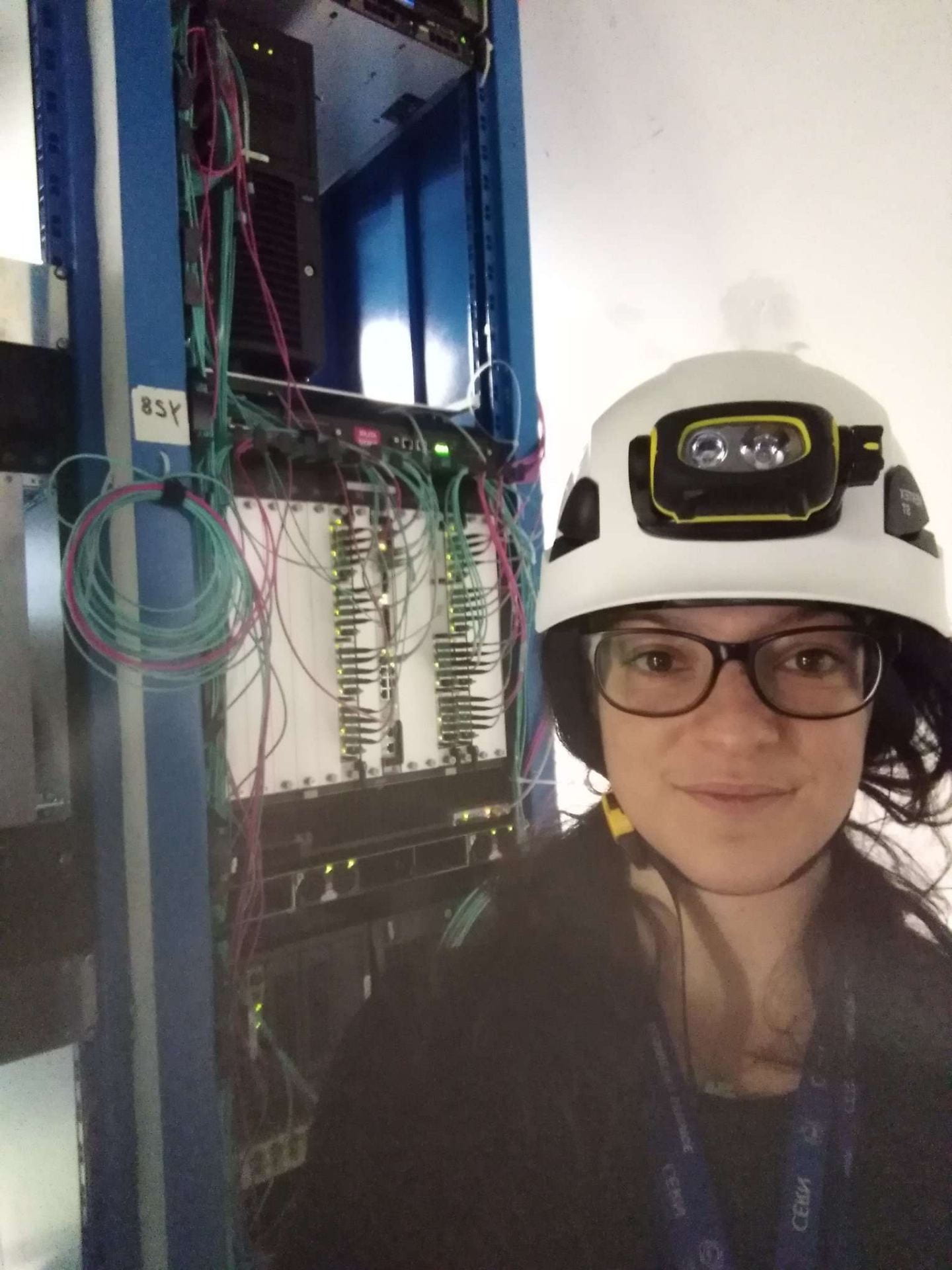 Dr. Alessandra Betti was selected to be the next co-convener of the ATLAS Experiment’s Di-Higgs Subgroup. This group operates within the context of the Higgs and Diboson Searches (HDBS) group and is tasked specifically with the search for and study of two-Higgs production at the Large Hadron Collider. Co-conveners are selected for two-year terms on a staggered cycle, with each of the two conveners offset by one year from one another.
Dr. Alessandra Betti was selected to be the next co-convener of the ATLAS Experiment’s Di-Higgs Subgroup. This group operates within the context of the Higgs and Diboson Searches (HDBS) group and is tasked specifically with the search for and study of two-Higgs production at the Large Hadron Collider. Co-conveners are selected for two-year terms on a staggered cycle, with each of the two conveners offset by one year from one another.
Dr. Betti was born in Rome, Italy, where she did her University studies up to the Master’s degree in physics. Then she moved to Bonn, Germany, where she earned her PhD. She has been a post-doctoral fellow with the SMU ATLAS group for almost two years, carrying out her research projects on the ATLAS experiment at the LHC.
She has been working on searches for di-Higgs production in ATLAS for several years, working on the HH→bbττ search efforts, di-Higgs final-state measurement combinations, and prospects for future studies of di-Higgs production at the High-Luminosity (HL) LHC. More recently, she also worked on the combination of di-Higgs and single-Higgs measurements and has been serving as analysis contact for the ATLAS di-Higgs combination
effort with full LHC Run 2 data. She is also involved in the operations effort for the ATLAS Liquid Argon calorimeter, online software development, and commissioning of the ATLAS LHC Phase I upgrade.
The HDBS Analysis Working Group is a relatively new physics sub-organization in the ATLAS Experiment. Formed in 2018, HDBS is responsible for a portfolio of physics research efforts and operates in parallel in the experiment with other major physics groups such as the Higgs or the Standard Model Analysis Working Groups.
The SMU ATLAS research effort is strongly concentrated in the area of di-Higgs physics. This production mechanism should be accessible for discovery within the next 10 years. Because it is ultra-rare, and because the Standard Model makes reasonably well-defined predictions about that rarity, it’s an excellent laboratory for looking for the effects of new forces and particles. Any such undiscovered player in the cosmos might upset the careful balance that otherwise exists in nature to keep this process difficult to observe. Seeing it “before one expects to” would be a major discovery and could lead the way to a deeper understanding of nature. Dr. Betti will now help to lead a talented international team of physicists in pursuit of this crucial milestone.
Sneak Peek: Fall 2021 Physics Courses
We print here the list of physics department courses, as well as the current course calendar being entered into the system, for Fall 2021. Check out the courses and think ahead about what you might want to enroll in for an awesome autumn!
| Course Number | Course Title | Instructor |
| PHYS 1010 | Honors Introductory Physics | Sekula |
| PHYS 1105 | Mechanics Laboratory | Ye, Guarino |
| PHYS 1106 | Electricity and Magnetism Laboratory | Ye, Guarino |
| PHYS 1301 | Ideas of Modern Physics | Dalley |
| PHYS 1303 | Introductory Mechanics | Balakishiyeva, Dalley |
| PHYS 1304 | Introductory Electricity and Magnetism | Balakishiyeva, Vega |
| PHYS 1307 | General Physics I | Balakishiyeva |
| PHYS 1308 | General Physics II | Deiana |
| PHYS 3305 | Introduction to Modern Physics | Kehoe |
| PHYS 3340 | Computational Physics | Olness, Sekula |
| PHYS 3344 | Classical Mechanics | Coan |
| PHYS 3374 | Thermodynamics and Statistical Mechanics | Scalise |
| PHYS 4372/6372 | Galactic Structure, Dynamics and Evolution | Smith |
| PHYS 5382 | Introduction to Quantum Mechanics | Cooley |
| PHYS 6160 | Introductory Physics Instruction: A Practicum | Sekula, Olness |
| PHYS 6335 | Quantum Mechanics I | Scalise |
| PHYS 6351 | Statistical Mechanics | Nadolsky |
| PHYS 6380/4380 | Introduction to Particle Physics: From Quarks to Cosmos | Stroynowski |
| PHYS 7314 | Quantum Field Theory I | Vega |
Prof. Pavel Nadolsky presents a Colloquium on Proton Structure in the Large Hadron Collider Era
The next event of the Spring 2021 Department Speaker Series is on Monday, March 1, at 4pm. We welcome our own Prof. Pavel Nadolsky (SMU) to speak on the need to improve our collective knowledge of the proton’s structure in order to enable measurements already planned in the next 20 years at the Large Hadron Collider.
Miss a Colloquium or Seminar? Don’t Panic … They’re Recorded!
You can catch up on the Spring 2021 (and Fall 2020!) Physics Speaker Series by checking out your favorite subjects from archives! Explore supermassive black holes, the new Electron-Ion Collider planned for construction in the U.S., new ideas about dark matter or other novel particles or forces, or the basic research needs for future scientific instrumentation in HEP … all from your personal devices! Enjoy our archive of the Physics Speaker Series Talks below.
FACULTY NEWS
If you have something to share please feel free to send it along. Stories of your activities in research, the classroom, and beyond are very welcome!
A Long Gamma-Ray Burst Detected by the TESS Instrument
Prof. Krista Lynne Smith is pleased to report that her latest research paper is now available on the arXiv. Using data from the TESS (Transiting Exoplanet Survey Satellite) mission, Prof. Smith and her colleagues report on Gamma-Ray Burst (GRB) 191016A, which luckily fell into the field of view of the TESS satellite. To illustrate the good fortune of the TESS instrument’s vantage point on this event, Prof. Smith points out that “TESS can’t be slewed and pointed. Its survey pattern is laid out years ahead of time, so you have to plan ahead or, as in this case, be lucky! The observation of this one event establishes the rate at which TESS will serendipitously observe GRBs in the future.”
Due to the GRB’s proximity to the moon and TESS’s unusual orbit, TESS was the only space-based instrument in viewing position of the event. The paper presents the “light curve” of the event (the rate of energy from the burst vs. the time after the observation began) and use TESS and other instrument data (e.g. ground-based observations) to estimate the redshift (distance from Earth to the burst) of the event. Also using this and other information, Prof. Smith and her colleagues estimate that TESS is likely to detect about 1 such GRB afterglow per year above its threshold for seeing such events. GRB 191016A is the first gamma ray burst observed by TESS.
“TESS can’t be slewed and pointed. Its survey pattern is laid out years ahead of time, so you have to plan ahead or, as in this case, be lucky!”
Prof. Krista Lynne Smith
A Gamma-Ray Burst is an extremely energetic explosion. The only known GRBs have been observed in other galaxies, not in the Milky Way. Given how intensely they shine in astronomical instrumentation on and in orbit around Earth, at their origins these must be cataclysmic events. They are the most energetic known events in the universe, save for the Big Bang itself. While the initial burst of energy (lasting from milliseconds to hours) is in the gamma-ray photon frequency band, the “afterglow” of the burst lasts much longer and results in electromagnetic radiation across the spectrum. Lasting more than two seconds, GRB 191016A is classified as a “long” GRB.
The progenitors of GRBs are not fully understood, although a leading hypothesis is that they are tied to the collapse of very heavy stars, resulting in black holes that jet immense amounts of energy perpendicular to the plane of rotation after collapse. The energy we observe on Earth is due to “looking down the gun barrel” of these jets.

Research like that published by Prof. Smith and her colleagues is essential to solving the riddle of GRBs. The details of the observations of GRB 191016A can be found in arXiv:2102.11295.
STAFF NEWS
Staff In-Office Schedule for Week of March 1
The in-office staff schedule for the week of March 1 is nominally as follows:
- Monday: Lacey
- Tuesday: Michele
- Wednesday: Lacey
- Thursday: Michele
- Friday: Lacey
Of course, both are always available on Microsoft Teams, by Email, or by phone.
Full staff in-office calendar for March:
STUDENT NEWS
If you have something to share please feel free to send it along. Stories of students in research, the classroom, internships or fellowships, awards, etc. are very welcome!
Jared Burleson Selected as the Robert and Nancy Dedman Outstanding Senior for 2021
Congratulations to SMU Physics and Math dual-major Jared Burleson for being selected as this year’s Robert and Nancy Dedman Outstanding Senior for 2021! Dedman College of Humanities and Sciences annually determines the outstanding senior based on department-level nominations and supporting letters.

Jared is academically accomplished and also highly active in the research environment on twin projects: the ATLAS Experiment at the Large Hadron Collider in Geneva, Switzerland and the Electron-Ion Collider proposed for construction at Brookhaven National Laboratory in the U.S. In addition to these efforts, he sings with SMU’s Meadows Chorale, served on the student governing council for Ware Commons and volunteers at the local food bank. He also is a University Honors student and president of SMU Chapter of the Society of Physics Students, which was just named one of the top 15 percent of chapters by the national organization. He was also recently selected to receive the Schwarzman Scholar award, one of the world’s most prestigious and selective international fellowships. He is one of 154 scholars from 39 countries and 99 universities chosen from 3,600 applicants to study for a year at Tsinghua University in Beijing, China – an opportunity that sets him firmly on the path to achieving his dream.
Congratulations to Jared for this capstone recognition of his excellence! Jared is planning to pursue a Ph.D. in Physics after the conclusion of his fellowship.
Reminder: Ishwita Saikia Running for the Student Member-at-Large Position of the Texas Section of the APS!
 Third-year PhD student Ishwita Saikia was nominated for, and is now standing for election to, the Texas Section of the American Physical Society‘s Executive Committee. She is running for Student Member-at-Large. All members of the TSAPS are eligible and encouraged to vote. Voting is open through March 10, 2021 at 11:59:00 PM Central Time. As long as you become a member of APS and the TSAPS before voting closes, you should be eligible to vote.
Third-year PhD student Ishwita Saikia was nominated for, and is now standing for election to, the Texas Section of the American Physical Society‘s Executive Committee. She is running for Student Member-at-Large. All members of the TSAPS are eligible and encouraged to vote. Voting is open through March 10, 2021 at 11:59:00 PM Central Time. As long as you become a member of APS and the TSAPS before voting closes, you should be eligible to vote.
In the department, Ishwita has served as the physics representative to the Graduate Student Assembly (GSA) and presently serves as the graduate student representative on the Physics Chair’s Student Advisory Council, which works with the Department Chair to identify issues that affect students and facilitate departmental action to address those issues.
ALUMNI NEWS
If you are an alum of the doctoral, masters, majors or minor programs in Physics at SMU, or have worked in our program as a post-doctoral researcher, and wish to share news with the community, please send your story to the Physics Department and we’ll work with you to get it included in a future edition.
THE BACK PAGE
How it started, how it’s going
Some photos,taken late last week, of a sample of the flooded and damaged spaces in Fondren Science Building; these are then compared to how the same spaces have looked in the previous 24 hours (just one week later).


